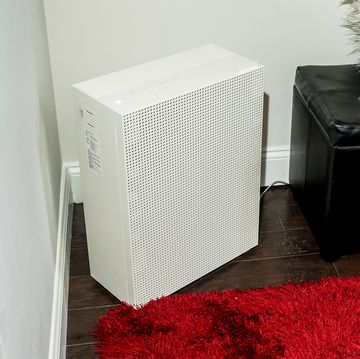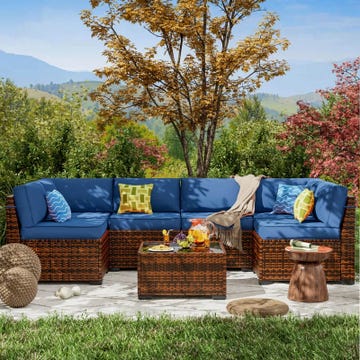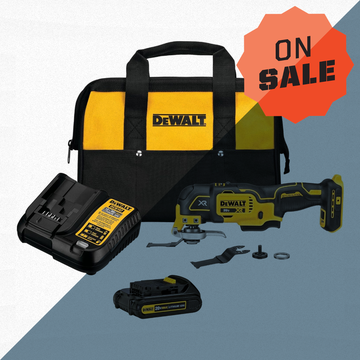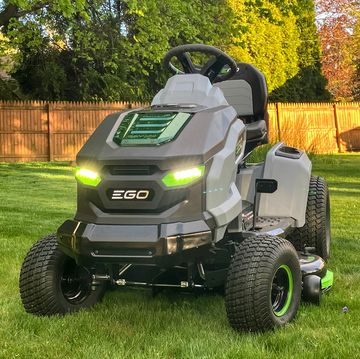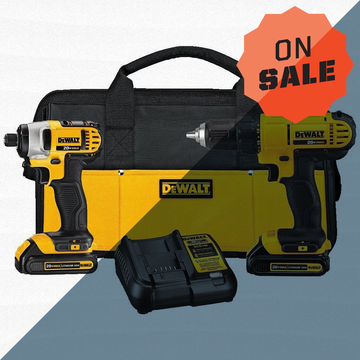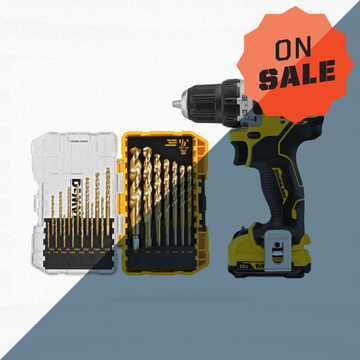Most woodworking projects are built using a combination of solid-wood boards and some type of sheet good, such as plywood, particleboard, or hardboard (a.k.a.: Masonite). Sheet goods come in large 4x8-ft. panels, so they’re ideal for making cabinet doors, wainscoting, tabletops, shelving units, drawer bottoms, cabinets, and other large, wide parts.
And while plywood—in its many variations—is by far the most popular sheet good, there’s a lesser-known panel that every DIY builder should know about: medium-density fiberboard, which is commonly referred to by its initials: MDF. But before taking a closer look at this versatile sheet good, here’s a brief explanation of exactly what is MDF.
MDF Defined
MDF is composted of wood-mill byproducts, primarily sawdust and wood shavings, which are ground into a fine powder, dried to remove moisture, and then mixed with resins and wax before being pressed into flat, hard panels. Unlike plywood, MDF doesn’t have a wood-grain appearance; it has a consistent light-brown color with no discernible texture or pattern. MDF is also much harder, smoother and denser than plywood, and it doesn’t have any voids, knots, or splinters.
MDF is sold at most home centers and lumberyards in 4x8-ft. sheets in two thicknesses: ½ in. ($26) and 3/4 in. ($28); ¼-in.-thick MDF ($7) is available, too, but typically only in 2x4-ft. panels. And note that moisture-resistant MDF and fire-resistant MDF are also available, although they’re harder to find and must typically be special ordered.
Okay, now let’s take a closer look at the benefits and drawbacks to MDF.
Benefits
- MDF is very hard and dense, perfectly flat, and extremely resistant to warping. It’s also relatively inexpensive.
- It has two super-smooth surfaces (front and back) that provide a near-perfect substrate for painting.
- Because MDF is composed of wood byproducts, you can cut, rout and drill it using standard woodworking tools.
- It expands and contracts less than solid wood.
- MDF parts can be fastened together with a wide variety of nails or screws, including pocket screws.
- MDF is an excellent substrate for wood veneer or plastic laminate.
- It can be glued together with virtually any type of adhesive, including carpenter’s glue, construction adhesive and polyurethane glue.
- MDF can be machined, routed and shaped to create decorative moldings and raised door panels—without annoying tear-out or splintering.
- MDF is highly compatible with solid wood. For example, you can install an MDF raised panel in a cabinet-door frame cut from hardwood.
Drawbacks
- MDF is much heavier than plywood, so be careful not to strain your back when transporting or lifting MDF sheets.
- MDF sheets have very sharp edges, which can slice into fingers. Protect your hands by wearing gloves when handling MDF.
- The super-fine dust created when you cut or rout MDF can irritate nasal passages and lungs. Always wear a dust mask, or better yet, a dual-cartridge respirator when working with MDF, and work outdoors or in a well-ventilated area.
- When using a pneumatic nail gun to fasten MDF, the surface will often pucker, leaving a small raised nib at each nail location. Remove each protrusion with sandpaper or a sharp wood chisel.
- The exposed edges of MDF can absorb water and excessive humidity, which causes swelling. To deter swelling, cover the MDF edges with wood veneer, plastic laminate, solid-wood edging, or two coats of polyurethane varnish.
- MDF doesn’t accept a wood-stain finish.
- Driving screws into the edges can split MDF panels. To avoid splitting, be sure to drive a pilot hole first.
- When driving screws into the face of MDF, drill a counter-bore hole first, so the screw head sets below the surface.
- Shelves made out of MDF will sag if they’re not properly supported with either vertical dividers or solid-wood edging.
- MDF tends to dull saw blades more quickly than cutting wood. To ensure clean cuts with minimum dulling, use only high-quality carbide-tipped saw blades.
Joe is a former carpenter and cabinetmaker who writes extensively about remodeling, woodworking, and tool techniques. He has written eight books and is a contributing editor to Popular Mechanics. He also appears on the Today’s Homeowner TV show, and co-hosts the weekly Today’s Homeowner Radio Show. Joe writes from his home in Roxbury, Connecticut.


